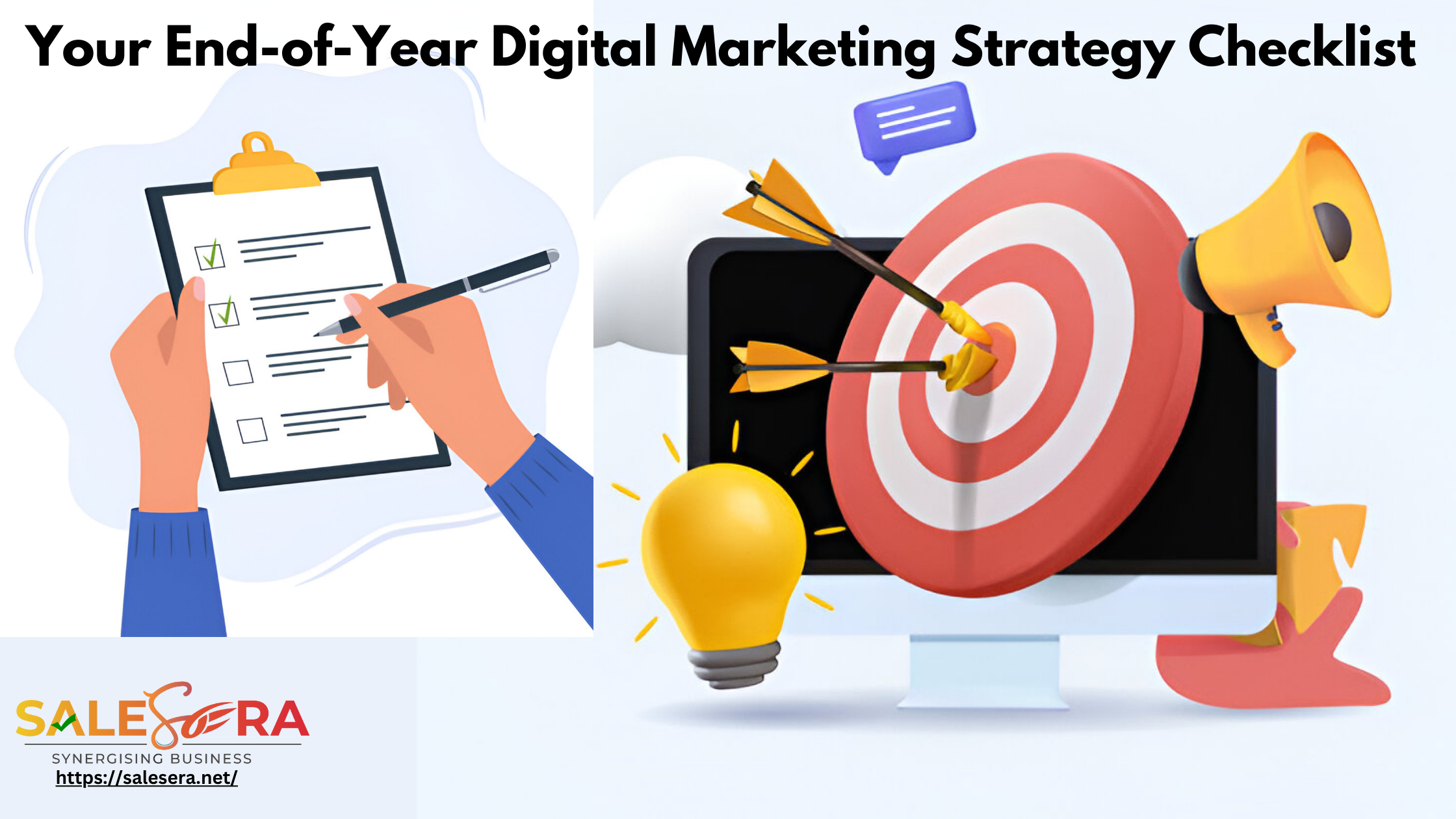Being technologically literate nowadays is essential since technology continues to strive in every aspect of our daily lives. Regarding the finance sector, technology has become a vital cornerstone for performing corporate operations.
Businesses that provide financial technology are becoming increasingly essential to the global corporate environment.
Financial technological enterprises employ technology to deliver innovative financial solutions. Finding opportunities and challenges in the industry and developing practical solutions are components of the marketing plan. Financial technology enterprises provide creative solutions that improve financial services’ equity, efficiency, and accessibility across various industries, including asset management, insurance, mobile payments, and crowdfunding.
In today’s digital era, they outperform traditional financial institutions by offering individualized services, increased security, and convenience.
This article will examine performance marketing strategies used by financial technology companies. Elaborating upon the essential components of these procedures, offering guidance on creating effective performance marketing procedures, and identifying the metrics used to assess their efficacy.
Fintech Marketing: Leveraging Growth Amidst Industry Evolution
Performance marketing in financial technology organizations is a data-driven strategy focusing on measurable outcomes and ROI. It employs digital channels and technology to manage, evaluate, and optimize campaigns using data like customer acquisition, conversion rates, and cost per acquisition. This method promotes focused activities that boost user sign-ups, transactions, and income.
The following salient factors underscore the importance of performance marketing for fintech enterprises:
- Cost-Effective Customer Acquisition: Performance marketing allows fintech organizations to watch and assess the impact of their marketing initiatives in real-time, with an emphasis on key performance metrics such as cost per acquisition and ROI.
- Targeted Advertising: Performance marketing in fintech enables businesses to target particular audience segments based on demographics, interests, and online activity, resulting in more tailored, relevant advertising campaigns and higher conversion rates.
- Measurable Results: Performance marketing provides measurable results, allowing fintech organizations to evaluate campaign effectiveness in real-time, enabling data-driven decisions and marketing strategy adjustments for improved results.
- Flexibility and Scalability: Performance marketing enables fintech companies to modify their strategies in response to shifting market trends, expand their campaigns based on performance data, and adjust to evolving business environments.
- Enhanced Customer Engagement: Fintech organizations may increase customer engagement by using performance marketing procedures, including social media, search engine marketing, and affiliate marketing, to develop brand loyalty and long-term partnerships.
Marketing for financial technology enterprises is critical for organizations in the rising financial industry since it enables targeted audience reach, brand recognition, client acquisition and retention, ROI optimization, flexibility to market changes, compliance, and innovation. In addition to helping businesses stand out from rivals, it helps them connect with their target market. Fintech organizations may achieve maximum ROI by employing intelligent and data-driven marketing activities.
The fast-developing financial technology enterprises create a dynamic landscape that includes both challenges and opportunities. Here are some focal facts outlining the challenges and opportunities in the fintech industry:
Challenges:
- Regulatory Challenges: Fintech companies face complex and varying regulations across different jurisdictions.
- Cybersecurity Threats: With the digitization of financial services, fintech companies are prime targets for cyberattacks.
- Customer Trust and Adoption: Building trust with customers and gaining widespread adoption of fintech services can be challenging.
- Competition from Traditional Institutions: Fintech firms face competition from traditional financial institutions investing in digital transformation.
Opportunities:
- Financial Inclusion: Fintech can help underrepresented groups get access to financial services.
- Innovation and Disruption: Fintech startups can drive innovation, improve efficiency, and enhance customer experiences.
- Data Analytics and Personalization: Fintech organizations may use data analytics and artificial intelligence to learn about their customer’s behaviour and preferences.
- Partnerships and Collaboration: Collaborating with other fintech firms, traditional financial institutions, and technology partners can create opportunities for growth and expansion.
To summarize, while the fintech business has its challenges, it also provides opportunities for financial inclusion, innovation, data analytics, and cooperation.
Top Key Components of Performance Marketing Procedures for Fintech Companies
Performance marketing procedures for financial technology enterprises include ideas and techniques for achieving quantifiable outcomes and optimizing marketing efforts. The following are the prevalent components of performance marketing methods for fintech companies:
1. Gamification for Customer Engagement
In a fintech company, gamification for customer engagement could involve creating interactive experiences within financial apps or platforms. It might include earning points or rewards for achieving financial goals, completing educational modules on financial literacy, or participating in challenges related to saving or investing. Gamification is also used to promote healthy financial practices, such as budgeting and expenditure tracking.
2. Influencer and Affiliate Marketing
Collaborate with affiliates and influencers to market financial products or services to their respective audiences. Through commission-based collaborations, affiliate marketing programs may aid in reaching a wider audience, increasing traffic, and producing leads.
3. Connecting by Building a Community
In a fintech company, building a community could involve creating online forums or social media groups where users can discuss financial topics, share tips, and ask questions. Hosting webinars or events focused on financial education or industry trends can also help users connect. Building a community allows fintech firms to provide value beyond their core goods or services, stimulate user involvement, and establish themselves as reliable sources of financial knowledge and assistance.
4. SEM (Search Engine Marketing)
To improve exposure in search engine results, use SEM techniques incorporating pay-per-click (PPC) advertising and search engine optimization (SEO). Fintech products and services may generate traffic and leads by focusing on relevant keywords and optimizing ad campaigns.
5. Social Media Advertising
Using social media platforms for advertising campaigns that target specific audience segments. Fintech organizations may efficiently contact potential clients by employing advanced targeting capabilities available on social media platforms such as Facebook, LinkedIn, and Twitter.
6. Content Marketing
Content marketing is the process of producing informative, engaging, and valuable content for specific target audiences. The usage of blogs, whitepapers, videos, and infographics in content marketing may foster thought leadership, enhance brand credibility, and draw potential customers to fintech products.
7. Email Marketing
Create tailored email campaigns to engage clients, nurture leads, and advertise financial offerings. Fintech organizations can increase email performance and generate conversions with automation, A/B testing, and list segmentation.
Financial technology businesses may enhance their marketing initiatives, increase customer acquisition, and provide measurable results in a cutthroat digital market by including these essential elements in their performance marketing strategies.
Crafting Effective Performance Marketing Procedures
Crafting effective performance marketing procedures is crucial for fintech enterprises aiming to achieve maximum return on investment (ROI).
- Setting clear objectives and KPIs
Establish quantifiable, precise marketing objectives that are in line with corporate objectives. Well-defined goals give performance marketing initiatives direction, whether they focus on enhancing conversion rates, raising brand recognition, or expanding client acquisition.
Select KPIs that offer insightful data on the effectiveness of campaigns and are pertinent to the particular marketing goals. Customer acquisition cost (CAC), customer lifetime value (CLV), conversion rates, and return on investment (ROI) are typical key performance indicators (KPIs) used in fintech marketing.
- Targeting the right audience segments
Conduct extensive market research to establish your target audience’s needs, preferences, and habits. Create thorough customer profiles to customize marketing tactics and messaging that appeal to the intended audience.
- Personalization and customization in marketing efforts
Personalization and customization are essential components of marketing strategies that aim to engage customers, build brand loyalty, and boost conversion rates. Businesses may improve audience resonance and boost engagement by developing customized messaging that takes into account the tastes, habits, and demographics of their customers.
Customer satisfaction can increase, and conversion rates can be boosted by grouping clients according to demographics, interests, or past purchases. Businesses may offer tailored product suggestions based on browsing history, previous purchases, and preferences by leveraging data analytics and AI algorithms. It improves the shopping experience and boosts cross-selling and upselling.
Users may have a more customized experience via dynamic content based on real-time user behavior. Personalized incentives, discounts, and promotions may increase conversions, promote recurring business, and cultivate customer loyalty.
- Leveraging data analytics and AI for optimization
Artificial intelligence (AI) and data analytics are powerful tools that financial technology firms may use to streamline processes and spur expansion. Businesses may manage risks and improve security measures by using data-driven decision-making to examine past data, industry trends, and consumer behavior patterns. Large amounts of transaction data can be instantly analyzed by AI-powered fraud detection systems, which can then be used to spot suspicious activity and stop fraudulent transactions.
- Budget allocation and optimization
Effectively distribute marketing funds among various channels by using ROI analysis and performance statistics. Budget allocations should be regularly reviewed and adjusted to maximize outcomes and minimize costs.
Assure a smooth and intuitive user experience throughout all marketing touchpoints, such as landing pages, advertisements, and websites. To improve the user experience, optimize for quick load times, responsiveness on mobile devices, and an obvious call-to-action.
Metrics for Evaluating Marketing Success

- Customer Acquisition and Retention
For fintech organizations, acquiring and keeping customers are essential elements of any marketing strategy. The following are some guidelines for monitoring new client acquisition costs and customer retention practices:
New Client acquisition costs:
- Calculating Customer Acquisition Cost (CAC): Including marketing and sales expenses, divided by the number of new customers.
- Analyzing Channel-specific CAC: Identify cost-effective marketing channels like social media ads, email campaigns, and referral programs. Allocate resources to channels with lower CAC and higher conversion rates.
- Comparing CAC to Customer Lifetime Value (LTV): Ensure acquisition costs are justified by long-term customer value.
- Continuous optimization: Test different marketing strategies based on CAC data to improve conversion rates and reduce acquisition costs.
Customer Retention Practices:
- Personalized Communication: Consistent communication with clients via personalized messages, emails, and social media.
- Consumer Input and Surveys: Obtaining consumer input via surveys, evaluations, and feedback forms.
- Loyalty Programs: Implementing programs that reward repeat business with incentives like discounts, special deals, or reward points.
- Excellent Customer Assistance: The staff is trained to provide prompt and effective customer assistance.
- Personalized Suggestions: Use data analytics and AI algorithms to provide product suggestions based on consumer preferences and purchase history.
- Revenue Growth and Financial Performance
A company’s long-term success and survival depend heavily on evaluating revenue growth and profitability as well as keeping an eye on financial performance for business scalability. For each, consider these crucial actions:
Evaluating Profitability Growth in Revenue:
- Revenue Growth Analysis: Keep tabs on and evaluate revenue growth by contrasting present numbers with previous information. Determine the patterns, trends, and variables affecting the increase in revenue.
- Determine vital profitability measures such as net profit margin, ROI, ROA, and gross profit margin. Compare these numbers to benchmarks set by the industry.
- Customer Lifetime Value (CLV): Calculate the total estimated income that a client will bring in throughout their business partnership. Aids in making well-informed judgments on tactics for acquiring and keeping customers.
- Cost Analysis: To find opportunities for cost optimization, do a comprehensive cost analysis.
- Find the point in a break-even analysis where there is no profit or loss due to total revenue equal to total costs.
Analyzing Financial Performance for Business Scalability:
- Financial Ratios: Determine significant financial ratios to assess the performance and health of the company’s finances, such as the debt-to-equity ratio, return on equity (ROE), and return on investment (ROI). For benchmarking purposes, compare these ratios with industry standards.
- Cash Flow Analysis: To evaluate the company’s operational, free, and liquidity cash flows, do a cash flow analysis. Assure enough financial reserves for investments, development plans, and operating requirements.
- Risk Management: Recognize and reduce monetary risks that may affect the long-term sustainability and scalability of the business. To handle operational, regulatory, and market risks, develop risk management methods.
- Planning for Scenarios: Use scenario analysis to ascertain the potential effects of different market conditions on the organization’s financial performance. Create backup plans and approaches to deal with unforeseen circumstances.
- Relations with Investors: Keep open lines of communication on the company’s financial performance, future growth potential, and strategic plans with investors and stakeholders. To draw in investment and encourage the scalability of your firm, establish reputation and trust.
- Building Long-Term Customer Relationships
A business’s capacity to succeed and last depends on its ability to cultivate enduring connections with its clients. Prioritizing consumer loyalty and building long-term connections are fundamental to success. The following actions may be taken to successfully create enduring client relationships:
Prioritizing Customer Loyalty and Trust:
- Customer-Centric Strategy: Make your business operations revolve around the customers’ wants and requirements by adopting a customer-centric strategy. Pay attention to what customers have to say, resolve any issues they may have, and modify your offerings to suit their needs.
- Individualized Engagement: Use social media interactions, email marketing, and customized messaging to create channels of individualized engagement with your clients. To gain their confidence and loyalty, care about their wants and needs.
- Integrity and Transparency: Establish trust with your clients by being open and honest about your pricing, rules, and company procedures. To build trust and cultivate enduring connections, operate with honesty and integrity in all of your dealings.
- Consistent Quality: To meet or exceed client expectations, provide consistently high-quality goods and services. Customer loyalty and trust are increased when products, services, and customer support are consistently provided.
- Reward Loyalty: To recognize and express gratitude to loyal customers and to provide loyalty programs, prizes, and incentives. Give them exclusive discounts, deals, or VIP perks as a token of gratitude for lasting assistance.
Delivering consistent value to foster lasting relationships
- Customer Education: Provide useful resources and knowledge to assist clients in making defensible choices.
- Tailored Recommendations: Provide solutions that are specifically catered to based on data analytics and client insights.
- Outstanding Customer Service: Attend to the demands of your customers in a prompt, proactive, and sympathetic manner.
- Ongoing Engagement: Consistent updates, correspondence, and follow-ups.
- Long-Term Relationship Building: Foster client loyalty and invest in customer retention tactics.
Frequently Asked Questions
1. What does fintech performance marketing entail?
In the finance industry, performance marketing is a digital marketing tactic whereby advertisers only pay for particular activities that are closely related to their marketing objectives, including clicks, leads, or acquisitions.
2. Which performance marketing channels are frequently employed in the fintech industry?
SEM (Search Engine Marketing), affiliate marketing, email marketing, social media advertising, and content marketing are typical financial performance marketing procedures.
3. How can fintech businesses assess the effectiveness of their performance-based marketing initiatives?
Key performance indicators (KPIs), including cost per acquisition (CPA), return on ad spend (ROAS), conversion rate, customer lifetime value (CLV), and click-through rate (CTR), can be used to gauge the success of performance marketing initiatives.
4. What particular difficulties does performance marketing in the fintech industry face, and how may these be resolved?
Increasing competition, escalating client acquisition costs, navigating complicated regulatory settings, and upholding security and trust in a field handling sensitive financial data are some of the problems unique to performance marketing in the fintech business.
These challenges may be addressed by emphasizing customer-centricity and transparency in all marketing communications, following legal requirements, developing strategic alliances, and employing innovative marketing techniques.
5. How does data analytics fit into fintech performance marketing?
Due to its ability to provide precise ROI measurements, optimize marketing efforts, enable targeted advertising, and provide insights into consumer behavior, data analytics is an essential component of fintech performance marketing.
Customize Your Performance Marketing Strategy with SalesEra
Success in marketing depends on ongoing learning and adaptation. Since the dynamics of the market are always shifting, marketers must stay up to date on industry advancements as well as changes in consumer behavior. Adopting a flexible and dynamic approach that embraces change enables organizations to quickly adapt to shifting consumer demands and market conditions.
Understanding the audience is vital for building focused and personalized marketing tactics that resonate with customers and promote engagement. By acquiring insights about customer behavior, marketers may offer relevant content, goods, and services that fulfill their target audience’s expectations. With Salesera, you can enhance your B2B marketing approach and realize the full potential of performance marketing. Our professionals will collaborate closely with you to create and execute a customized performance marketing strategy that yields quantifiable outcomes. Make an appointment for a free consultation to learn how we can help you improve your marketing tactics, coordinate your sales and marketing initiatives, and propel your fintech company’s growth like never before.
written by Hala Kiwan








